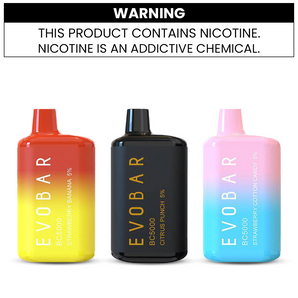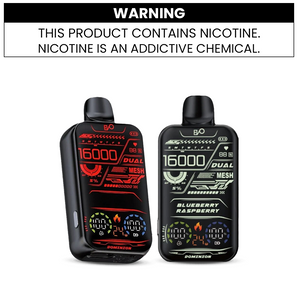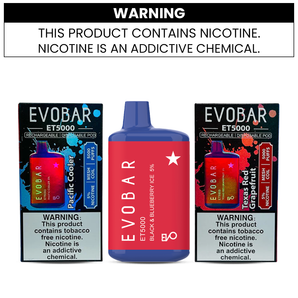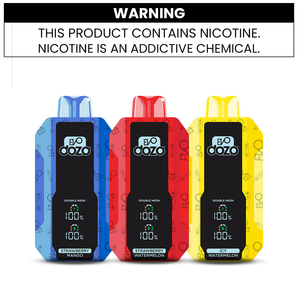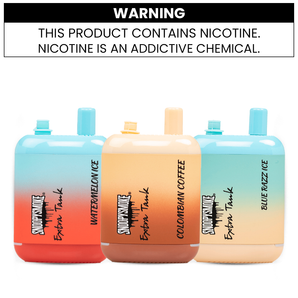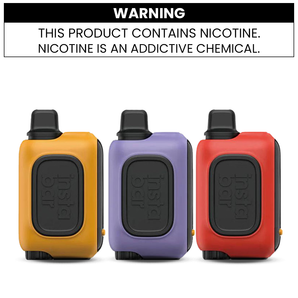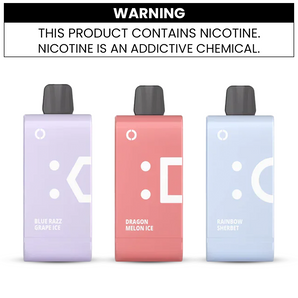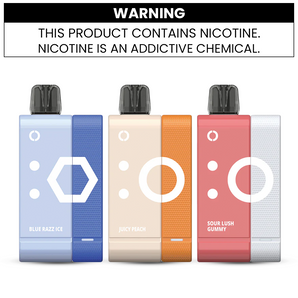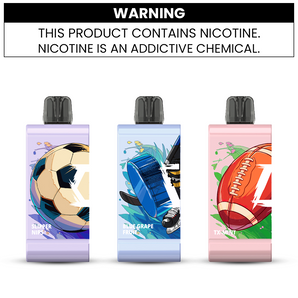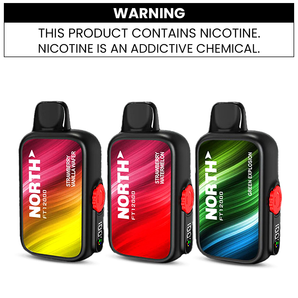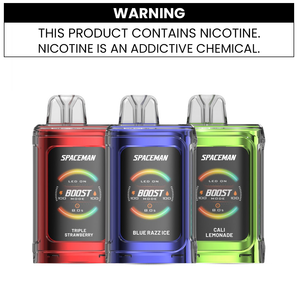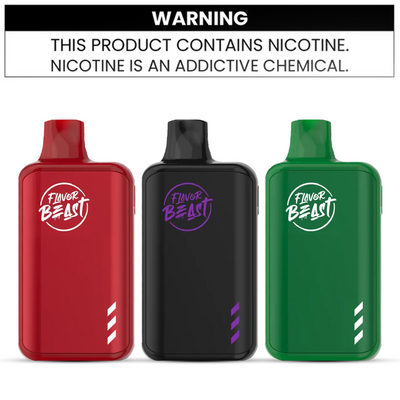What Happens After 3 Days Of No Nicotine?
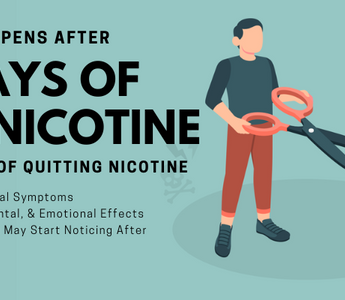
A Clear Look at the First Milestone in Quitting
Giving up nicotine is an effective move towards reclaiming your health, energy, and freedom. But for many people, the first few days are also the hardest. If you’ve made it through the first 72 hours without smoking, vaping, or using any nicotine product—congratulations. That’s a huge accomplishment.
But you might also be wondering: What exactly is happening in your body and brain after three days with no nicotine?
In this blog, we’ll break down what happens after 72 hours of quitting nicotine—physically, mentally, and emotionally. We’ll also look at common withdrawal symptoms, how long they last, and tips for pushing through this challenging (but rewarding) stage of the quit journey.
Why the First 3 Days Matter So Much
Nicotine is a highly addictive stimulant, and it doesn’t take long for your brain and body to become dependent on it. Within seconds of inhaling cigarette smoke or a vape hit, nicotine reaches your brain, triggering the release of dopamine—the “feel good” chemical linked to reward and pleasure.
Over time, your brain starts to expect regular doses of nicotine to function “normally.” That’s why, when you quit, your body goes through withdrawal, and those first 72 hours are often the most intense.
By the third day, your system is largely free of nicotine, but the symptoms of withdrawal are typically at their peak. This is a critical turning point.
What Happens in Your Body After 72 Hours Without Nicotine
Here’s a breakdown of the positive physical changes and common challenges that take place around the 3-day mark:
Nicotine Has Left Your Body
At about 72 hours, the nicotine has completely cleared from your bloodstream. This means your body is no longer chemically dependent on the substance, but your brain is still adjusting to the absence.
Important note: While the physical addiction is breaking down, psychological cravings and habits may continue for weeks or months.
Your Breathing May Start to Improve
After 3 days, lung function begins to improve. Your bronchial tubes start to relax, making it easier to breathe. You might notice:
-
Less wheezing
-
Easier deep breaths
-
More energy during physical activity
The body is beginning to repair itself. This will continue to improve in the coming weeks as the cilia (tiny hair-like structures in your lungs) regenerate and start clearing out mucus and toxins.
Your Senses Are Returning
Nicotine and tobacco products dull your sense of taste and smell. Around day 3, many people start noticing that food tastes better and smells stronger. While this can be surprising—even overwhelming—it’s a sign your nervous system is recalibrating.
Withdrawal Symptoms Peak Around Day 3
While the body is healing, the brain is struggling to rebalance without nicotine. This is when withdrawal symptoms may hit their peak, including:
-
Cravings: Strong urges to smoke or vape may feel almost constant.
-
Irritability or Mood Swings: You may feel easily annoyed, angry, or emotional.
-
Headaches: As your body adjusts to lower stimulation.
-
Fatigue or Insomnia: Disrupted sleep patterns are common.
-
Anxiety or Depression: Due to the sudden drop in dopamine levels.
-
Increased Appetite: Nicotine suppresses appetite—quitting can increase hunger.
These symptoms are normal and temporary, but they can feel intense. This is the hump that many people struggle to get over—but also the point after which it gets easier.
What’s Happening in the Brain After 3 Days Without Nicotine?
Nicotine withdrawal doesn’t just impact your body—it affects your brain on a chemical level.
Nicotine interacts with receptors in your brain that control:
-
Mood
-
Focus
-
Reward
-
Stress regulation
After quitting, your brain has to readjust its chemistry. The dopamine “boost” from nicotine is gone, and the brain must learn how to regulate these feel-good chemicals naturally again. This can lead to a temporary emotional low, often called the “dopamine dip.”
Good news: With time, your brain begins to restore its natural balance—often within a few weeks to a few months.
Cravings After 72 Hours: Are They Stronger or Weaker?
Cravings can feel strongest around the 3-day mark, especially for long-time smokers or vapers. But research shows these intense cravings typically last 3–5 minutes, and they become less frequent as your brain adapts.
To manage cravings, try:
-
The 4 D’s: Delay, Deep breath, Drink water, Do something else
-
Chewing gum or crunchy snacks
-
Distraction (e.g., walking, texting a friend, stretching)
-
Breathing exercises or short meditations
Consistency is key. Every time you resist a craving, you’re rewiring your brain and building resilience.
Benefits You May Start Noticing After Day 3
Despite the challenges, many people begin to notice improvements even within the first 72 hours:
Better Sleep
Though insomnia is common early on, your sleep cycle will begin to improve without nicotine interfering with REM sleep.
Stabilized Heart Rate and Blood Pressure
These may return to normal after 2–3 days without nicotine.
More Stable Mood (Eventually)
Although withdrawal may temporarily affect your mood, many people notice decreased anxiety and irritability after the initial week.
What’s Next After Day 3?
The next 1–2 weeks after quitting are still considered a vulnerable period, but you’ve already conquered one of the hardest parts.
Here’s what happens next:
-
Day 4–7: Cravings may still occur, but they’re often shorter and more manageable.
-
Weeks 2–4: Most physical withdrawal symptoms ease, and your energy levels improve.
-
1 Month: Coughing and breathing improve noticeably.
-
3 Months: Lung function increases significantly.
-
1 Year: Risk of heart disease drops by 50%.
Real Tips from Ex-Smokers and Ex-Vapers
-
“I kept a water bottle with me all the time. Anytime I had a craving, I drank water. It helped more than I thought it would.”
-
“I downloaded a quit-smoking app, and it tracked my progress every day—that gave me motivation.”
-
“Chewing gum and taking deep breaths saved me on day 3. I told myself, ‘just one more hour,’ every time I had a craving.”
These real experiences show how small strategies add up to big victories.
Quitting Aids That Can Help During Day 3 and Beyond
If you're struggling at this stage, you’re not alone. There are many tools that can support you:
-
Nicotine Replacement Therapy (NRT)—Patches, lozenges, or gum to reduce cravings.
-
Behavioral support—counseling or quitlines.
-
Quit apps—such as QuitNow, Smoke Free, or EasyQuit.
-
Support groups—Online or local communities provide accountability.
These resources can help reduce withdrawal symptoms and increase your chances of long-term success.
Final Words: Why Day 3 Is a Turning Point
Making it through three days without nicotine is more than a milestone—it’s proof of your strength and commitment. Yes, the cravings can be intense. The withdrawal symptoms are real. But they are also temporary.
By Day 3, your body has already started healing:
-
Nicotine is gone.
-
Lung function is improving.
-
Your senses are returning.
-
Your brain is learning to function naturally again.
Most importantly, you’re proving to yourself that you can do hard things—and that every smoke-free hour is worth it.
If you're just starting your quit journey, focus on one craving at a time. One day at a time. You’ve got this—and the freedom on the other side is worth every effort.
Want help or product recommendations for quitting smoking or vaping? Let me know—I can provide tools, resources, or tailored product content.

